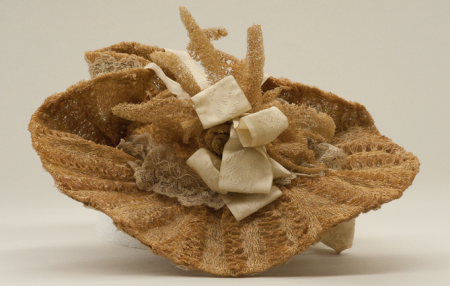- Developer of super broccoli reflects on his career. With photo of collectors in NSFW shorts.
- Touring the commons of the world. Thankfully no tight shorts in sight.
- Video explaining Rothamsted’s Park Grass experiment. Apparel entirely acceptable, don’t worry.
- Ten million-year-old genome duplication finally came good when ancient farmers domesticated maize.
- Training materials for African breeders to be developed.
- Fungal diversity to the rescue of plants, for a change.
- Africa’s black soap.
- Improving teff. That’s a low bar, I suspect.
- A genome I’m sure we can all get behind.
- Oh dear, that organic meta-analysis “flawed” after all. Will it ever end?
- Rethinking sunflower domestication. An oldie but goldie, which re-surfaced today for some reason. Does anyone know where we are with this now?
- The Deliverance of tomatoes.
Nibbles: Custodian farmers, Farming wild species, Museum of Agriculture, GMO maize in Mexico, Organic metareview, Boron tolerance, Date tomato, Cultivated Plant Taxonomy Newsletter, Barcoding Welsh honey
- First, find your custodian farmers.
- Sure, they can farm wild species too.
- Then, get them to produce something cool, sell it, and use the money to preserve some nearby temples.
- Oh yeah, but better make sure there’s no GMOs around.
- Organic helps. No, really.
- Ok, so maybe you have to help them out by breeding for higher boron tolerance or something.
- Something like tomatoes that don’t rot. And in French, but with photo.
- Make sure the taxonomy is right, though.
- And if in doubt, use barcoding.
Nibbles: Coffee processing, British liquorice, Livestock maps, Chicken semen, Global Nutrition Report, Plant booze, Cuban urban ag, Forests & nutrition, Sustainable cacao, Climate-smart ag, Modelling landuse, Mapuche up in arms, Rothamstead experiment
- Touring the world’s coffee processors.
- Liquorice next? Starting in the UK?
- India has 30% of the world’s cattle. Which you might not be able to guess from these very cool ILRI maps. Including one on chickens, in which the Nordic countries feature perhaps less than they should.
- The Global Nutrition Report will have these indicators at country level. Some stuff there on fruit and vegetable consumption, but why nothing specifically on dietary diversity? Anyway, if you’d like to make suggestions, you can.
- Wait, why is there nothing on alcohol consumption? And is diversity in alcohol-producing plants a good thing? I mean, nutrition-wise.
- Uhm, nothing on urban agriculture either. I bet you that’s an indicator of something or other, nutrition-wise.
- Maybe Amy Ickowitz of CIFOR will suggest some indicators. She has interesting data on forest cover and child nutrition.
- How to make cacao cultivation more sustainable.
- Andy Jarvis on how to scale up climate-smart agriculture without necessarily sacrificing goats. Nor, presumably, nutrition.
- Model says environment can support subsistence hunting and agriculture only up to a point, and no more. Still no cure for cancer. But did someone tell the Mapuche?
- Well, what do you know, genes come, and genes go.
What does a bonnet gourd look like?
Tucker on 'Bonnet Gourds', 1874: "the women in the Southern States split it and made up very pretty and useful head coverings or bonnets"
— Kew Gardens Library and Archives (@Kew_LAA) July 14, 2014
This 1 seems to refer to Luffa, but does anyone have photos? I’d love to see what these bonnets look like, but unfortunately Google is not being very helpful. Gourds are inevitably much on my mind after my trip to PNG…
LATER: And here it is, thanks to Eve Emshwiller:

Brainfood: Landscape preferences, Livestock selection, Romanian conservation, Nordic Horseradish, Social structuring, Darjeeling tea, ZFarming, Pineywoods cattle, Cotton breeding, Neglected veggies
- Public preferences for ecosystem-enhancing elements in agricultural landscapes in the Swiss lowlands. People don’t like complex agricultural landscapes as much as they should. Well, in photos anyway.
- Some traditional livestock selection criteria as practiced by several indigenous communities of Southern Ethiopia. The selection methods of elders are based on characters that correlate with production and reproduction efficiency. Now there’s a shocker.
- Needs and gaps in the conservation of wild plant genetic resources for food and agriculture in Romania. 4 out of 300 useful wild species may need better protection. Sounds like a pretty good score to me.
- Genetic diversity in Nordic horseradish, Armoracia rusticana, as revealed by AFLP markers. Each Nordic country has pretty much its own.
- How social organization shapes crop diversity: an ecological anthropology approach among Tharaka farmers of Mount Kenya. Diversity of crops and of sorghum landraces is structured socially, with neighbourhood groups being an important organizing principle.
- The labor of terroir and the terroir of labor: Geographical Indication and Darjeeling tea plantations. GI has worked because marketing has convinced people that industrial plantations are also idyllic gardens, but the workers know better.
- Urban agriculture of the future: an overview of sustainability aspects of food production in and on buildings. You need to work at it.
- Long in the Horn: An Agricultural Anthropology of Livestock Improvement. “Livestock as landscape” in the southern US.
- Usefulness and Utilization of Indian Cotton Germplasm. Need to try chemical and physical mutagenesis as well as bring in new diversity from abroad. Do I detect a slight whiff of desperation?
- Potential and biodiversity conservation strategies of underutilized or indigenous vegetables in Himahal Pradesh. Improve provision of planting materials, management practices, harvesting methods, post-harvest , marketability, nutritional status and policies and legal frameworks. Really? Is that all? I suspect anyone into NUS could have told you that before you even went into the field.